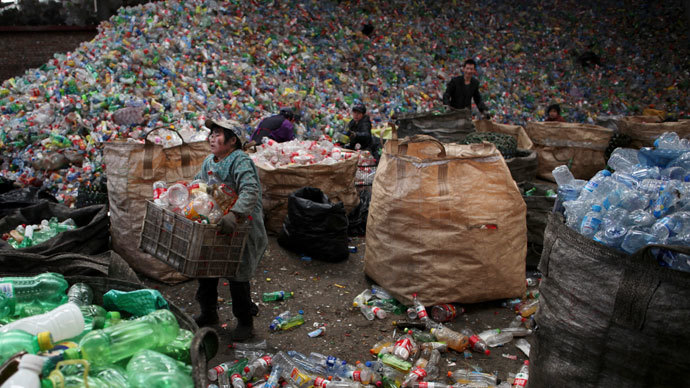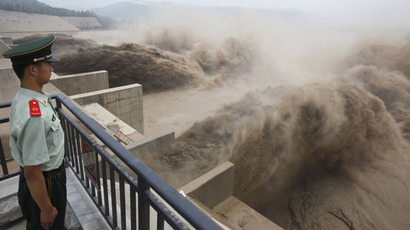Polluting to death: China introduces execution for environmental offenders

China has introduced “harsher punishments” for breaking the nation’s environmental protection laws: reckless violators of pollution standards in the world’s biggest and fastest-growing economy now face execution.
A new judicial interpretation taking effect on Wednesday has
tightened Chinese “lax and superficial” enforcement of
environmental protection laws, Xinhua reported citing a
government statement.
The government is set to introduce a “precise criteria for
convictions and sentencing” while the “judicial
explanation provides a powerful legal weapon.” Law
enforcement should take environmental regulations seriously and
“all force should be mobilized to uncover law-breaking clues
of environmental pollution in a timely way,” the statement
reads.

Earlier this month the cabinet approved new measures to
combat air pollution as social discontent over the air quality in
urban centers continues to rise.
To help tackle the environmental danger, Beijing has promised to
focus more on solar energy, despite ongoing trade disputes with
the United States and Europe.

The State Council approved 10 anti-pollution measures aimed at
reducing emissions from the industries which contributed to the
country’s economic miracle of the last three decades.
Cutting emissions per unit of GDP in key industries by at least
30 percent by the end of 2017 is one of the main objectives
alongside curbing the growth of high-energy-consuming industries
such as cement, steel, glass and aluminum.
Among other key measures on the table is to strengthen
enforcement of penalties that firms pay based on their emissions
scale. China also promised legal action for those industries that
fail to upgrade pollution controls and introduce emissions
standards.

The battle for the environment became the new leadership’s top
agenda when the country underwent its once in a decade power
transition. The previous leadership started the effort but
enforcement has often been lacking.
According to a report published in April 2010 by Global Burden of
Disease Study, air pollution in China was a contributing factor
to 1.2 million premature deaths in 2010, almost 40 percent of the
global total. Researchers equate that figure to 25 million
healthy years of life from the population.
In March, the Organization for Economic Cooperation and
Development stated that “urban air pollution is set to
become the top environmental cause of mortality worldwide by
2050”, estimating that up to 3.6 million people could die
prematurely from air pollution each year, mainly in China and
India.
The Chinese Academy of Environmental Planning in March said that
cost of environmental degradation equated to some 3.5 percent of
the 2010 GDP or $230 billion.

In winter of 2013 Beijing was experiencing the worst
environmental data on record. Levels of dangerous particles less
than 2.5 micrometres across, known as PM2.5s, were 22 times what
the World Health Organization considers safe. In response to the
widespread public anger, authorities introduced emergency
measures to thin traffic and shut down polluting industries.
Rallies also erupted in May in the city of Kunming as thousands
flooded the streets to protest against the planned production of
a chemical at a refinery.
Problems related to pollution are also reaching China’s vast
countryside, the Ministry of Environmental Protection
acknowledged early June.
“With industrialisation, urbanisation and the modernisation of
agriculture, the situation for the rural environment has become
grim," the ministry said. Crucial aspects emanate from an
“increase in pressure from mining pollution and severe
pollution from the raising of livestock and poultry.”














